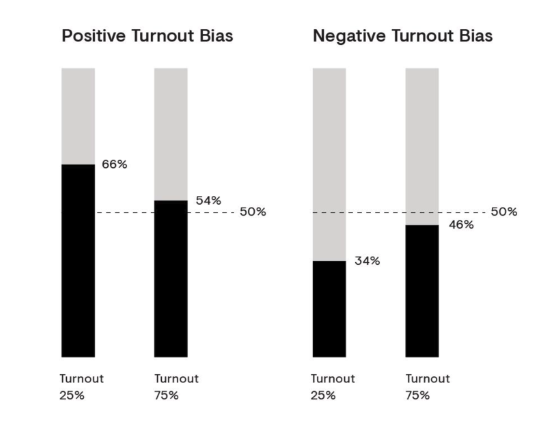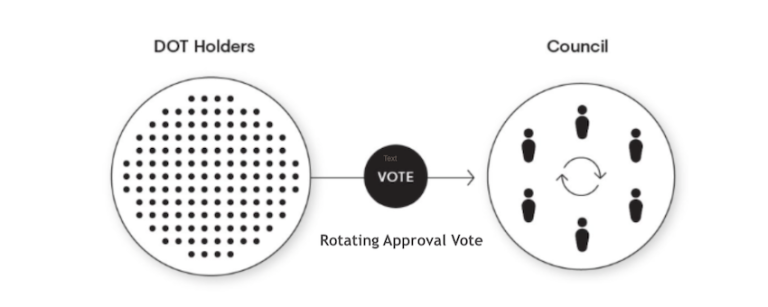Polkadot, a popular multi-chain network, has gained significant attention in the crypto space due to its innovative governance model. The platform aims to tackle the challenges of scalability, interoperability, and governance faced by many blockchain projects. However, like any system, Polkadot’s governance model has its advantages and limitations. In this article, we will assess the pros and cons of Polkadot’s governance, evaluate its decentralization, identify potential risks, and evaluate its future viability.
Polkadot’s Governance Model: An Overview

At its core, Polkadot’s governance model revolves around a decentralized decision-making process. It allows token holders, known as DOT holders, to participate in shaping the platform’s direction, upgrades, and parameter changes. Polkadot employs a signaling mechanism called on-chain governance, where token holders can submit, vote, and pass proposals.
Advantages of Polkadot’s Governance
- Democratic Decision-making: Polkadot’s governance model ensures that everyone’s voice is heard by allowing token holders to participate in decision-making. This democratic approach ensures a fair and inclusive decision-making process.
- Efficiency and Speed: The on-chain governance mechanism allows for fast decision-making and implementation of proposals. This agility enables Polkadot to adapt and evolve swiftly in response to changing market dynamics or security concerns.
- Upgradability: By enabling token holders to vote on upgrades and parameter changes, Polkadot ensures continuous improvement and innovation of the platform. This flexibility is crucial in a rapidly evolving blockchain ecosystem.

Limitations of Polkadot’s Governance
- Centralization of Power: While Polkadot’s governance aims to be democratic, it is important to note that voting power is proportional to the number of DOT tokens held. This concentration of power in the hands of large token holders may lead to centralization concerns.
- Inequality of Influence: Smaller DOT holders may lack the same level of influence as larger holders, potentially leading to an imbalance in decision-making. This could result in decisions favoring the interests of large stakeholders at the expense of smaller participants.
- Lack of Expertise in Decision-making: The governance model relies on the collective intelligence of token holders, which may not always align with technical expertise. This could lead to suboptimal decisions regarding complex technical or security-related matters.
Assessing Polkadot’s Decentralization
Polkadot aims to achieve decentralization through its governance model. However, it is crucial to evaluate the actual extent of decentralization. Here are some key factors to consider:
- Validators: Polkadot’s network relies on a set of validators chosen by token holders. The more diverse and distributed the validators are, the higher the degree of decentralization.
- Participation: Assessing the active participation of DOT holders in governance is vital. High levels of involvement indicate a more decentralized decision-making process.

Potential Risks in Polkadot’s Governance
- Collusion: The concentration of voting power in the hands of a few stakeholders may increase the risk of collusion, potentially undermining the integrity of decision-making.
- Lobbying and Influence: In a system where voting power is directly proportional to the number of DOT tokens held, larger stakeholders may have more resources to influence decision outcomes through campaigns or lobbying efforts.
- Voter Apathy: Token holders’ lack of interest or engagement in governance may lead to fewer participants and reduced decentralization, thereby impacting the legitimacy of decision-making.
Evaluating Polkadot’s Future Viability
Polkadot’s governance model has provided an inclusive and efficient decision-making framework so far. However, to evaluate its future viability, we need to consider how it addresses potential risks and challenges. Let’s compare the pros and cons of Polkadot’s governance model:
| Pros | Cons |
|---|---|
| Democratic decision-making | Centralization of power |
| Efficient and agile decision-making | Inequality of influence |
| Continuous upgradability and innovation | Lack of expertise in decision-making |
Polkadot’s Governance Model: Assessing Pros and Cons
While Polkadot’s governance model offers significant advantages such as democratic decision-making and speed, it also faces limitations such as centralization concerns and potential inequality. The platform’s future viability relies on addressing these challenges, actively promoting decentralization, and mitigating potential risks. By striking a balance between inclusivity and expertise, Polkadot can foster a robust, resilient, and sustainable governance model for the long term.
